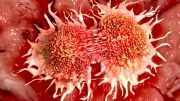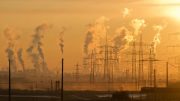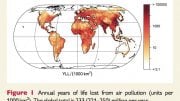
Researchers from the National Institutes of Health have discovered a correlation between high levels of particulate air pollution and an increased risk of breast cancer.
NIH researchers combined historical air quality data with breast cancer data from large U.S. study.
Researchers at the National Institutes of Health (NIH) found that living in an area with high levels of particulate air pollution was associated with an increased incidence of breast cancer. The study, published on September 11 in the Journal of the National Cancer Institute, is one of the largest studies to date looking at the relationship between outdoor air pollution, specifically fine particulate matter, and breast cancer incidence. The research was done by scientists at the National Institute of Environmental Health Sciences (NIEHS) and the National Cancer Institute (NCI), both part of NIH.
Findings and Key Observations
The researchers saw that the largest increases in breast cancer incidence was among women who on average had higher particulate matter levels (PM2.5) near their home prior to enrolling in the study, compared to those who lived in areas with lower levels of PM2.5. Particulate matter is a mixture of solid particles and liquid droplets found in the air. It comes from numerous sources, such as motor vehicle exhaust, combustion processes (e.g., oil, coal), wood smoke/vegetation burning, and industrial emissions. The particulate matter pollution measured in this study was 2.5 microns in diameter or smaller (PM2.5), meaning the particles are small enough to be inhaled deep into the lungs. The Environmental Protection Agency has a website known as Air Now where residents can enter their zip code and get the air quality information, including PM2.5 levels, for their area.
“We observed an 8% increase in breast cancer incidence for living in areas with higher PM2.5 exposure. Although this is a relatively modest increase, these findings are significant given that air pollution is a ubiquitous exposure that impacts almost everyone,” said Alexandra White, Ph.D., lead author and head of the Environment and Cancer Epidemiology Group at NIEHS. “These findings add to a growing body of literature suggesting that air pollution is related to breast cancer.”
Research Methodology
The study was conducted using information from the NIH-AARP Diet and Health Study, which enrolled more than 500,000 men and women between 1995-96 in six states (California, Florida, Pennsylvania, New Jersey, North Carolina, and Louisiana) and in two metropolitan areas (Atlanta and Detroit). The women in the cohort were on average about 62 years of age and most identified as being non-Hispanic white. They were followed for approximately 20 years, during which 15,870 breast cancer cases were identified.
The researchers estimated annual average historical PM2.5 concentrations for each participant’s residence. They were particularly interested in air pollution exposures during a period of 10-15 years prior to enrollment in the study, given the length of time it takes for some cancers to develop. Most previous studies have assessed breast cancer risk in relation to air pollution around the time of study enrollment and did not consider past exposures.
“The ability to consider historic air pollution levels is an important strength of this research,” said Rena Jones, Ph.D., senior author and principal investigator of the study at NCI. “It can take many years for breast cancer to develop and, in the past, air pollution levels tended to be higher, which may make previous exposure levels particularly relevant for cancer development.”
Further Insights and Limitations
In order to understand how the connection between air pollution and breast cancer might differ based on tumor type, the researchers evaluated estrogen receptor-positive (ER+) and -negative (ER-) tumors separately. They observed that PM2.5 was associated with a higher incidence of ER+ breast cancer, but not ER-, tumors. This suggests that PM2.5 may affect breast cancer through an underlying biologic pathway of endocrine disruption. ER+ tumors are the most common tumors diagnosed among women in the United States.
However, the study had limitations in its capacity to discern variations in the association of air pollution and breast cancer across different regions. The authors recommend future research to delve deeper into how regional disparities in air pollution, including diverse PM2.5 sources, might influence breast cancer risk.
Reference: “Ambient fine particulate matter and breast cancer incidence in a large prospective US cohort” by Alexandra J White, Phd, Jared A Fisher, Phd, Marina R Sweeney, Phd, Neal D Freedman, Phd, Joel D Kaufman, MD, Debra T Silverman, Sc.D and Rena R Jones, Phd, 11 September 2023, JNCI: Journal of the National Cancer Institute.
DOI: 10.1093/jnci/djad170
This research was funded by the NIEHS and NCI Intramural Program, 1ZIAES103332 and 1Z01CP010125.









Be the first to comment on "The Hidden Danger: Air Pollution’s Link to Breast Cancer Risk"